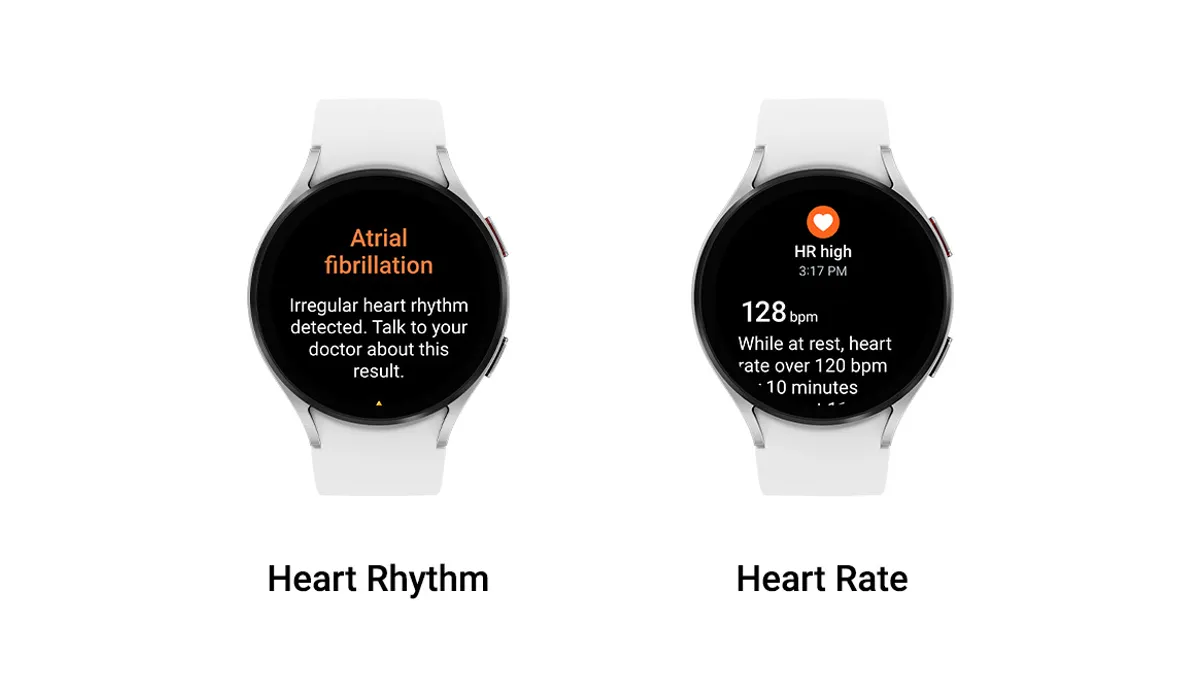Dive Brief:
- Samsung Electronics is adding irregular heart rhythm notifications to its Galaxy Watch in the U.S. and 12 other markets.
- The news comes weeks after the U.S. Food and Drug Administration granted 510(k) clearance for the feature, allowing Samsung to add a capability already offered by rivals such as Apple.
- Samsung sells the latest version of its device, Galaxy Watch5, for $279.99 and plans to bring the irregular heart rhythm capabilities to both its upcoming, health-focused One UI 5 Watch and the older, cheaper Galaxy Watch4.
Dive Insight:
Samsung has established its Galaxy Watch wearables as an alternative to Apple Watch for people with smartphones that run on Google’s Android operating system. However, the Samsung devices have lacked a key health feature that Apple introduced in 2018, namely the ability to detect an irregular heart rhythm that could indicate the wearer has atrial fibrillation (AFib).
The devices are already capable of recording an ECG via the Samsung Health Monitor app but lack the ability to monitor the wearer’s heart rhythm and alert them of arrhythmia. More than 15 million Galaxy Watch wearers have used the device to manually track their ECG, according to the company.
Now, regulatory clearances are allowing Samsung to add arrhythmia monitoring and notifications. Samsung secured approval for the feature from the Korean Ministry of Food and Drug Safety (MFDS) last week.
Having received FDA and MFDS clearances, the company plans to make the notification feature available in the U.S., Korea, Argentina, Azerbaijan, Costa Rica, the Dominican Republic, Ecuador, Georgia, Guatemala, Hong Kong, Indonesia, Panama and the UAE starting this summer. The list of countries is a fraction of the 74 markets where the Samsung Health Monitor app is available.
Samsung has placed some restrictions on the feature, explaining that the app intended for adults aged 22 years and older and is not designed to provide a notification on every episode of irregular rhythm suggestive of AFib. Rather, the “feature is intended to opportunistically acquire pulse rate data when the user is still and analyze the data when determined sufficient toward surfacing a notification.”











